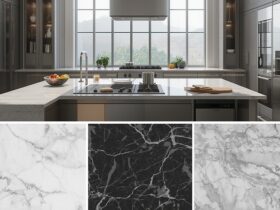Selecting the right saddle pad is essential for both the comfort of your horse and the effectiveness of your riding. A good saddle pad provides cushioning, support, and moisture-wicking properties, helping to prevent saddle sores, distribute pressure evenly, and maintain a comfortable temperature for your horse’s back. With so many options available on the market, choosing the best saddle pad can seem like a daunting task. However, by considering factors such as material, design, fit, and intended use, you can narrow down your options and select the perfect saddle pad for your needs. In this blog post, we’ll provide a few useful tips to help you navigate the process of selecting the best saddle pad for your horse.
Process of Selecting Best Saddle Pad for your horse
- Consider Material:
The material of the saddle pad plays a crucial role in its performance and durability. Some common materials used for saddle pads include:
a. Wool: Wool saddle pads are known for their excellent moisture-wicking properties, breathability, and ability to conform to the shape of the horse’s back. They provide good cushioning and support, making them suitable for a wide range of riding disciplines.
b. Felt: Felt saddle pads offer excellent shock absorption and durability, making them ideal for high-impact activities such as roping or trail riding. They provide a firm and stable foundation for the saddle, helping to prevent pressure points and discomfort.
c. Foam: Foam saddle pads are lightweight, easy to clean, and provide good cushioning for the horse’s back. They come in various thicknesses and densities, allowing you to choose the level of support and protection required for your riding activities.
d. Gel: Gel saddle pads offer superior shock absorption and pressure distribution, making them ideal for horses with sensitive backs or those prone to soreness. They provide a soft and cushioned feel, helping to minimize impact and discomfort during riding.
- Evaluate Design:
The design of the saddle pad can impact its performance and suitability for different riding disciplines. Consider factors such as shape, thickness, and contouring when evaluating saddle pad designs:
a. Shape: Saddle pads come in various shapes, including square, rectangular, and contoured. Choose a shape that matches the profile of your saddle and provides adequate coverage for your horse’s back.
b. Thickness: The thickness of the saddle pad affects the amount of cushioning and support it provides. Thicker pads offer more cushioning but may also add bulk under the saddle, while thinner pads provide a closer contact feel but may offer less protection against pressure points.
c. Contouring: Contoured saddle pads are shaped to follow the natural curve of the horse’s back, providing a better fit and reducing the risk of slippage or bunching. They offer improved comfort and stability, particularly for horses with prominent withers or a high-withered conformation.
- Ensure Proper Fit:
A properly fitting saddle pad is essential for your horse’s comfort and well-being. When selecting a saddle pad, consider the following fit factors:
a. Size: Choose a saddle pad size that corresponds to the size of your saddle and provides adequate coverage for your horse’s back. Avoid pads that are too small, as they may not provide sufficient protection or support, and pads that are too large, as they may cause rubbing or interference.
b. Withers Clearance: Ensure that the saddle pad provides adequate clearance over the horse’s withers to prevent pressure and rubbing. Look for pads with cutback or contoured designs that accommodate the withers and allow for freedom of movement.
c. Saddle Placement: Position the saddle pad correctly to ensure proper alignment with the saddle and minimize the risk of slippage or shifting during riding. Make sure the pad extends beyond the front and back edges of the saddle to provide full coverage and protection for your horse’s back.
- Assess Intended Use:
Consider the intended use of the saddle pad when making your selection, as different activities may require specific features or properties:
a. General Riding: For everyday riding and training, opt for a versatile saddle pad that offers good cushioning, breathability, and durability. Look for materials such as wool or foam that provide comfort and support for your horse’s back during extended periods of riding.
b. Performance Events: For competitive disciplines such as dressage, show jumping, or reining, choose a saddle pad that offers specialized features tailored to the demands of the sport. Look for pads with moisture-wicking properties, shock-absorbing capabilities, and ergonomic designs that enhance performance and comfort for both horse and rider.
c. Trail Riding: For long hours in the saddle on rugged terrain, prioritize comfort and durability when selecting a saddle pad. Choose a pad with ample cushioning, moisture-wicking properties, and a secure fit to ensure your horse remains comfortable and protected throughout the ride.
Conclusion:
Selecting the best saddle pad for your horse requires careful consideration of factors such as material, design, fit, and intended use. By choosing a saddle pad that provides adequate cushioning, support, and moisture-wicking properties, you can ensure your horse’s comfort and well-being during riding activities. Whether you’re a recreational rider, a competitive athlete, or a trail enthusiast, investing in a high-quality saddle pad tailored to your horse’s needs will enhance the riding experience for both you and your equine partner. Use the tips provided in this blog post to guide your selection process and make an informed decision when choosing the best saddle pad for your horse.











Find Us on Socials